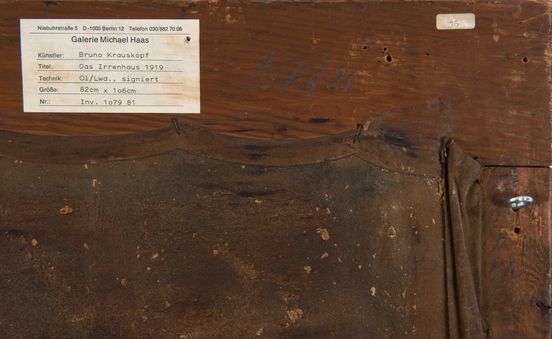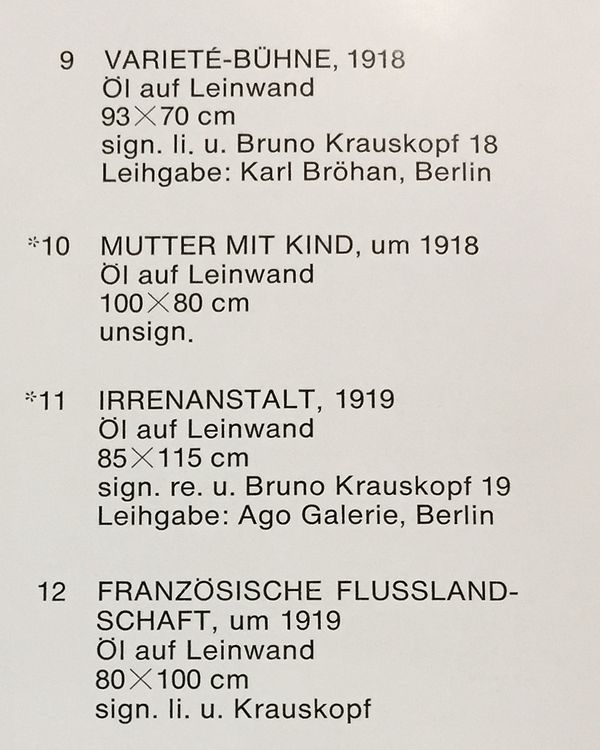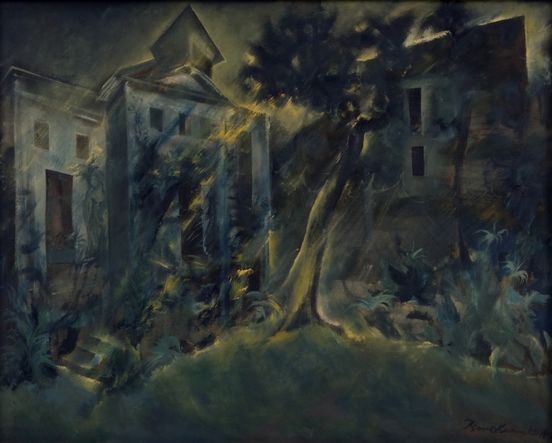| Genre | Painting |
| Materials | Oil on canvas |
| Size | 82 x 106 cm |
| Signature | signed and dated bottom right: Bruno Krauskopf 19 |
Restored with the support of the Ernst von Siemens Kunststiftung
Research status
Provenance is unclear and research continues.
Dashing through the park on a dapple grey
“In Norway he was usually compared with Van Gogh and in New York they called him the German Rabelais of fine art. In Berlin in the twenties the craziest stories were told about him. He liked, so they said, to dash around the Tiergarten on a dapple-grey horse, mostly after boozing all night […], but he was also a grand seigneur, a cavalier with a glass of champagne. And when the urge to paint grabbed him, he would stand at his easel half-naked like a stoker.”
Eberhard Knoch: Über Bruno Krauskopf, sein Werk und diese Ausstellung, in: Bruno Krauskopf: Ölgemälde, Aquarelle, Zeichnungen. Gedächtnisausstellung zum 80. Geburtstage, exhibition catalogue, Rathaus Charlottenburg / Kunstamt Berlin-Charlottenburg 1972, unpaginated
This description of the happy-go-lucky Bruno Krauskopf dates from 1972. It was prompted by a retrospective for the artist, who emigrated to Norway in 1933 and was later defamed by the Nazis as “degenerate”. In 1945 the Norwegian government accused Krauskopf of spying for Germany and declared him an “undesirable alien”. In 1948 he went to New York. Krauskopf eventually returned to Berlin (West), where he died in 1960.

Label of the Michael Haas gallery in Berlin. The pointer “1079/81” on the right next to the label tallies with the inventory number on the gallery label.
Bruno Krauskopf, Das Irrenhaus, 1919 (Back, Detail)
© Repro: Kai-Annett BeckerIn 1985 the Berlinische Galerie bought “The Madhouse” from the Michael Haas gallery in Berlin, which was unable to provide any details about its previous history or any other owners. A catalogue printed by the gallery in 1981 lists this work with a photograph, but with no provenance data. So by that time it had arrived at the gallery.
The Ago Galerie in Berlin is a likely source. In 1977, under almost the same title, it lent the painting to the borough culture department in Wedding for a double exhibition devoted to Bruno Krauskopf and Wilhelm Kohlhoff (1893–1971).

The exhibition catalogue published by Kunstamt Wedding in 1977 calls Krauskopf’s painting “Irrenanstalt” (a synonym for “Irrenhaus”). The loan came from the Ago Galerie in Berlin.
Exhibition catalogue, Kunstamt Wedding, 1977
© Repro: Berlinische GalerieThe Ago Galerie, then located in Wilmersdorf, was founded by Wolfgang Thiede and specialised in art of the 18th to 20th centuries. It no longer exists. Krauskopf’s painting has not been found in the rare gallery catalogues so far researched. There is also a lack of basic information about the Ago Galerie. This shows how important it is to study the art market more deeply as a key instrument for provenance research. The gap in the provenance chain between 1919 and 1977 has not yet been filled.
